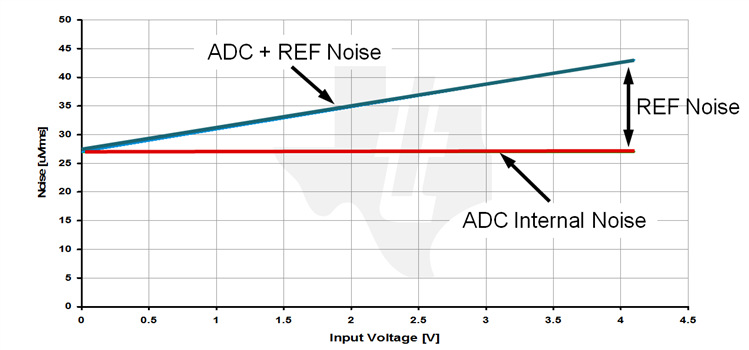Other Parts Discussed in Thread: ADS7056
Currently, I am working on a project where I’d like to use the ADS8320 A/D convertor. The only remaining open issue is the choice of reference voltage. Therefore I have some questions regarding the ADC behavior to reference noise which I hope you can help with:
- If the reference noise also contributes (with a scale factor) on the ADCs analog input, can it be said that both noise influences (analog input and reference voltage input) are partly correlated and thus partly cancel each other? Or is this wrong because both acquisition phase and conversion phase happen in different clock cycle so they are not correlated at all?
- If both noise contributions are uncorrelated, what is the worst case noise contribution of the ADC reference voltage input? Some sources tell me that the RMS reference noise will fully contribute to the total noise (if ADC is used full-scale) while other sources say only 40% will... Does this depend on which SAR architecture/switching method is used or can you clarify the ADC behavior for this noise source for me? Because the tight noise spec for this project it’s important for me to predict the worst case behavior of the ADC.



